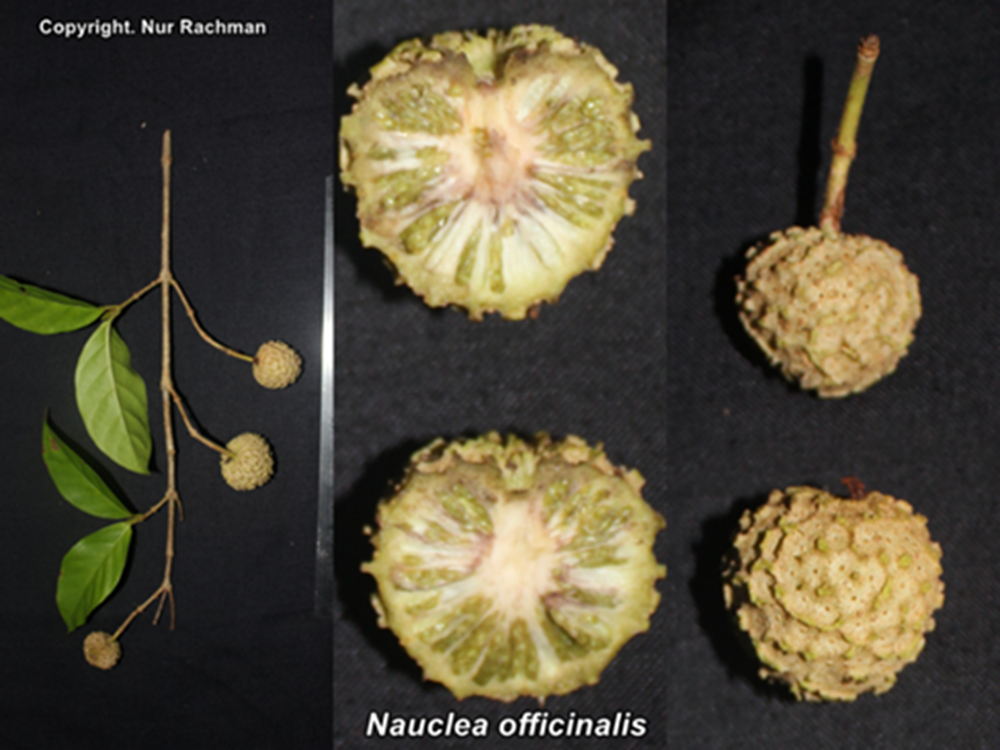Nauclea officinalis
(Pierre ex Pit.) Merr. & Chun
Rubiaceae
Nama : Bengkal.
Deskripsi : Pohon, mencapai tinggi 30 m, diameter batang dapat mencapai 70 cm. Kulit batang halus atau mengelupas, keabu-abuan sama coklat kemerahan. Pepagan kuning atau kuning kecoklatan sampai jingga; getah kuning pucat. Tunas vegetatif mempipih. Daun penumpu ada, membundar telur sampai jorong, dapat mencapai panjangnya 25 mm, tepi rata. Daun jorong sampai membundar telur sungsang; pangkal daun membaji; ujung daun melancip pendek, gundul di sisi bawah; pertulangan daun 4−10 pasang, terbenam di sisi atas. Bunga bonggol; jarang tunggal, bulat, diameter ± 15 mm, bunga biseksual, kelopak menyatu, mahkota bercuping 4 atau 5, panjang mencapai 4.5 mm, berpuntir saat kuncup, bakal buah bersel-2, bakal biji banyak per sel. Buah bonggol, bulat, tersusun dari banyak buah yang menyatu, berkayu dan berlubang-dangkal dan menonjol, tidak berpendar. Biji bulat sampai bulat telur, tidak bersayap.
Ekologi : Persebaran alami dari wilayah Cina, Indo-cina, Indonesia (Sumatra dan Kalimantan), Malaysia, dan Thailand. Pada umumnya tumbuh pada hutan dataran rendah termasuk hutan riparian dan hutan lahan basah; selain itu, juga tumbuh pada hutan dipterokarpa. Di Kalimantan Timur banyak dijumpai pada tepi sungai dan hutan lahan basah seperti Mesangat, Suwi, Sedulang, Semayang, dan Muara Wis.
Kegunaan : Kayu dimanfaatkan sebagai bahan baku bangunan dan cocok untuk bahan baku kayu lapis. Referensi: Kessler & Sidiyasa, 1994.

